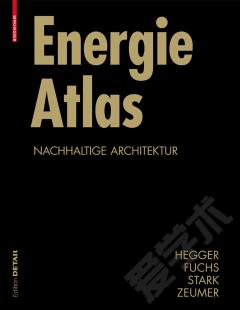Low Energy Cooling for Sustainable Buildings
Preface. About the Author. 1 Energy Demand of Buildings. 1.1 Residential Buildings. 1.1.1 Heating Energy. 1.1.2 Domestic Hot Water. 1.1.3 Electricity Consumption. 1.2 Office Buildings. 1.2.1 Heating Energy. 1.2.2 Electricity Consumption. 1.2.3 Air Conditioning. 1.3 Conclusions. 2 Facades and Summer Performance of Buildings. 2.1 Review of Fa c ade Systems and Energy Performance. 2.1.1 Single Fa c ades. 2.1.2 Double Fa c ades. 2.1.3 Modelling of Ventilated Fa c ades. 2.2 Experimental Results on Total Energy Transmittance. 2.2.1 Laboratory Experiments. 2.2.2 Building Experiments. 2.3 Cooling Loads through Ventilation Gains. 2.3.1 Double Fa c ade Experiments. 2.3.2 Parameter Study Using Simulation. 2.4 Energy Production from Active Fa c ades. 2.4.1 Thermal and Electrical Energy Balance of the Fa c ade. 2.5 Conclusions on Fa c ade Performance. 3 Passive Cooling Strategies. 3.1 Building Description and Cooling Concepts. 3.1.1 Lamparter Building, Weilheim. 3.1.2 Rehabilitated Office Building in Tubingen. 3.1.3 Low-energy Office Building in Freiburg. 3.2 Passive Night Ventilation Results. 3.2.1 Internal Loads and Temperature Levels. 3.2.2 Air Changes and Thermal Building Performance. 3.2.3 Simulation of Passive Cooling Potential. 3.2.4 Active Night Ventilation. 3.3 Summary of Passive Cooling. 4 Geothermal Cooling. 4.1 Earth Heat Exchanger Performance. 4.1.1 Earth to Air Heat Exchanger in a Passive Standard Office Building. 4.1.2 Performance of Horizontal Earth Brine to Air Heat Exchanger in the ebok Building. 4.1.3 Performance of Vertical Earth Brine to Air Heat Exchanger in the SIC Building. 4.1.4 Modelling of Geothermal Heat Exchangers. 4.1.5 Conclusions on Geothermal Heat Exchangers for Cooling. 5 Active Thermal Cooling Technologies. 5.1 Absorption Cooling. 5.1.1 Absorption Cycles. 5.1.2 Solar Cooling with Absorption Chillers. 5.2 Desiccant Cooling. 5.2.1 Desiccant Cooling System in the Mataro Public Library. 5.2.2 Desiccant Cooling System in the Althengstett Factory. 5.2.3 Monitoring Results in Mataro. 5.2.4 Monitoring Results in Althengstett. 5.2.5 Simulation of Solar-Powered Desiccant Cooling Systems. 5.2.6 Cost Analysis. 5.2.7 Summary of Desiccant Cooling Plant Performance. 5.3 New Developments in Low-Power Chillers. 5.3.1 Development of a Diffusion-Absorption Chiller. 5.3.2 Liquid Desiccant Systems. 6 Sustainable Building Operation Using Simulation. 6.1 Simulation of Solar Cooling Systems. 6.1.1 Component and System Models. 6.1.2 Building Cooling Load Characteristics. 6.1.3 System Simulation Results. 6.1.4 Influence of Dynamic Building Cooling Loads. 6.1.5 Economic Analysis. 6.1.6 Summary of Solar Cooling Simulation Results. 6.2 Online Simulation of Buildings. 6.2.1 Functions and Innovations in Building Management Systems. 6.2.2 Communication Infrastructure for the Implementation of Model-Based Control Systems. 6.2.3 Building Online Simulation in the POLYCITY Project. 6.3 Online Simulation of Renewable Energy Plants. 6.3.1 Photovoltaic System Simulation. 6.3.2 Communication Strategies for Simulation-Based Remote Monitoring. 6.3.3 Online Simulation for the Commissioning and Operation of Photovoltaic Power Plants. 6.3.4 Summary of Renewable Energy Plant Online Simulation. 7 Conclusions. References. Index.
{{comment.content}}








 京公网安备 11010802027623号
京公网安备 11010802027623号